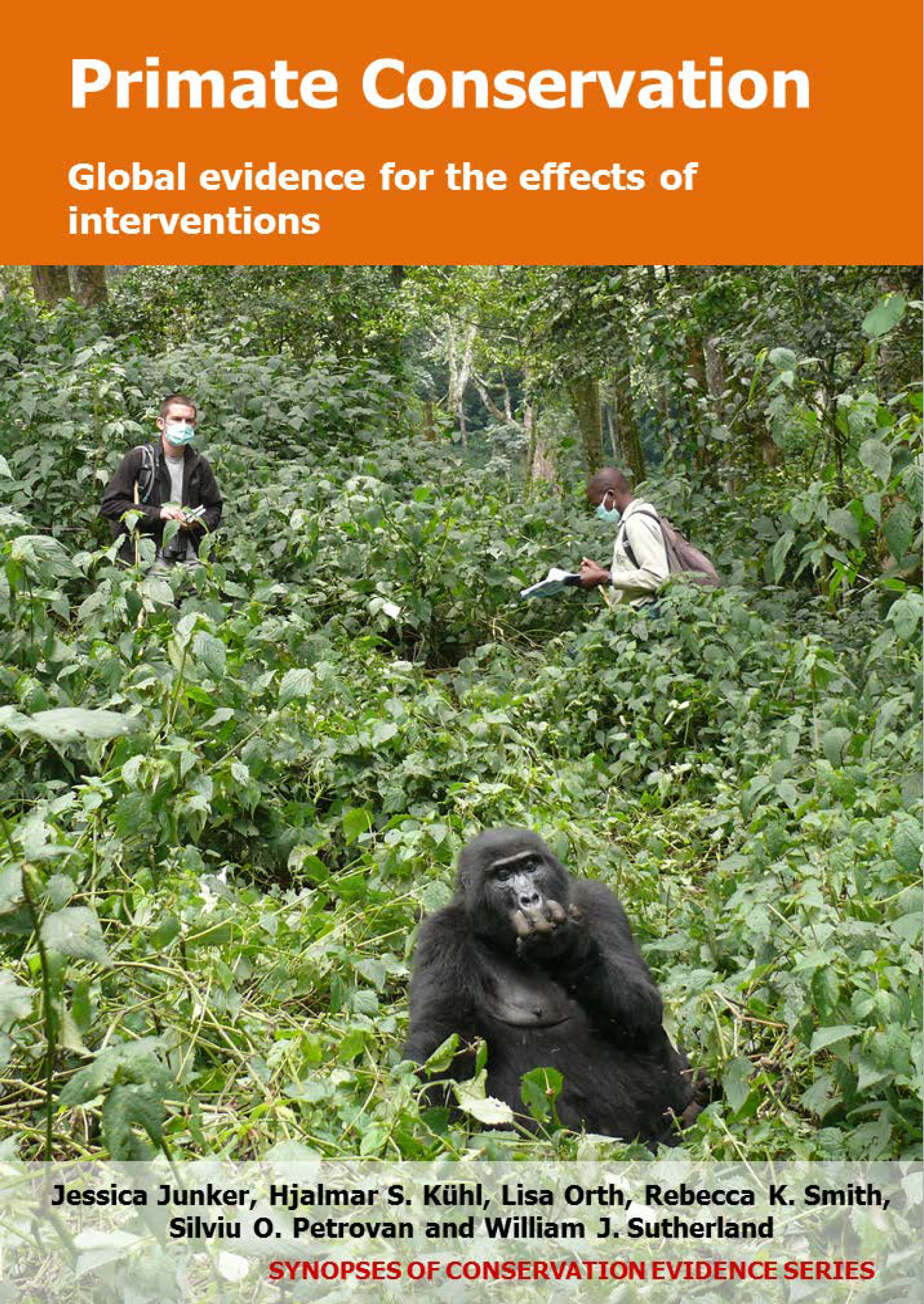Captive breeding and reintroduction of primates into the wild: limited free-ranging experience
-
Overall effectiveness category Unknown effectiveness (limited evidence)
-
Number of studies: 4
View assessment score
Hide assessment score
How is the evidence assessed?
-
Effectiveness
30% -
Certainty
10% -
Harms
0%
Study locations
Supporting evidence from individual studies
A controlled study in 2001 in tropical forest in Betampona Reserve, Madagascar found that diets of captive-bred, reintroduced black-and-white ruffed lemurs Varecia variegata variegata with limited free-ranging experience along with other interventions, overlapped with that of the resident wild group. No statistical tests were carried out to determine whether this overlap was significant. Reintroduced lemurs (three males and one female) fed on 54 species during one year, whereas the wild group (ten individuals) fed on 109 species over four years. Reintroduced lemurs consumed less foliage than the wild group, although no statistical tests were carried out to determine whether this difference was significant. The female was born and raised in a cage at a zoo and had two years of free-ranging experience at a sanctuary before release, while all males were born and raised in a free-ranging environment at the sanctuary. Lemurs were introduced in groups into habitat already occupied by the species and were provided supplementary food during resource-scarce periods only. The study does not distinguish between the effects of the different interventions mentioned above.
Study and other actions testedA before-and-after trial in 1997-2002 in primary forest in Betampona Reserve, Madagascar found that less than half of all captive-bred, parent-reared reintroduced black-and-white ruffed lemurs Varecia variegata variegata, which had limited semi-free-ranging experience alongside ten other interventions, survived five years. Five (38.5%) of 13 individuals survived after release and six individuals were born, of which only four survived. One female and one male reproduced with resident wild lemurs and the male became fully integrated into the wild group. Lemurs were held in outside (1.5-9.1 ha fenced forest) in the USA before reintroduction. Released animals were fitted with radio transmitters. Lemurs underwent quarantine and health checks before reintroduction in groups into habitat with predators and resident wild lemurs. They were recaptured and treated when sick and provided with supplementary food and water. They were allowed to adapt to local conditions before release. Cause of death of dead lemurs was clinically determined. The study does not distinguish between the effects of the different interventions mentioned above.
Study and other actions testedA before-and-after, site comparison study in 1996-2006 in tropical forests of Lesio-Louna Wildlife Reserve, Republic of Congo (Congo) and Batéké Plateau National Park, Gabon found that the majority of reintroduced western lowland gorillas Gorilla gorilla gorilla including captive bred individuals alongside 14 other interventions, survived for at least four years and some reproduced. Twenty-one (84%) of 25 gorillas released in Congo and 22 (85%) of 26 gorillas released in Gabon survived for at least four years. Nine females gave birth to 11 infants, of which nine survived. One individual of the Congo group was born in captivity and seven of the Gabon group came from captive-breeding facilities. Forty-three individuals were rehabilitated wild-born orphaned gorillas. Prior to release, gorillas underwent quarantine, health checks and received preventative vaccinations. Gorillas were released in groups and allowed to adapt to local environment and supplemented with food before release. Gorillas were released into habitat with no resident gorillas. Gorillas were treated for parasites and when sick. So-called ‘problem’-animals were removed and relocated. Dead gorillas were clinically examined. Both sites were proclaimed protected areas before reintroduction. The study does not distinguish between the effects of the different interventions mentioned above.
Study and other actions testedA before-and-after trial in 2008-2010 in a tropical forest-grassland mosaic at Batéké Plateau National Park, Gabon found that all captive-bred reintroduced western lowland gorillas Gorilla gorilla gorilla along with ten other interventions, survived for at least nine months. Three hand-reared juvenile gorillas from captive-breeding facilities in the UK were reintroduced into habitat with predators and without resident wild gorillas. They were allowed to adapt to local conditions for some time. They spent the night in an enclosure equipped with nesting platforms, nesting material, supplementary food and water. Gorillas were dewormed regularly on-site. Caretakers guided them into different forest patches on a daily basis. The study does not distinguish between the effects of the different interventions mentioned above.
Study and other actions tested
Where has this evidence come from?
List of journals searched by synopsis
All the journals searched for all synopses
This Action forms part of the Action Synopsis:
Primate Conservation
Primate Conservation - Published 2017
Primate Synopsis





)_2023.JPG)














